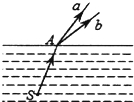[1]Global difference in intelligence is a sensitive topic, long filled with a large number of different
opinions. But recent data has indeed shown cognitive (认知的) ability to be higher in some countries
than in others. What's more, IQ scores have risen as nations develop—a phenomenon known as the
"Flynn effect". Many causes have been put forward for both the intelligence difference and the Flynn
effect, including education, income, and even non-agricultural labor. Now, a new study from researchers
at the University of New Mexico offers another interesting theory: intelligence may be linked to
infectious-disease rates.
[2]The brain, say author Christopher Eppig and his colleagues, is the "most costly organ in the human
body". Brainpower consumes almost up to 90 percent of a newborn's energy. It's clear that if something
affects energy intake while the brain is growing, the impact could be long and serious. And for vast parts
of the globe, the biggest threat to a child's body -- and therefore brain—is parasitic (由寄生虫引起的)
infection. These illnesses threaten brain development __________. They can directly attack live tissue,
which the body must then try every means to replace. They can invade the digestive pipe and block
nutritional intake. They can rob the body's cells for their own reproduction. And then there's the energy
channeled (输送) to the immune system to fight the infection.
[3] Using data on national "disease burdens" (life years lost due to infectious diseases) and average
intelligence scores, the authors found they are closely associated. The countries with the lowest average
IQ scores have the highest disease burdens without exception. On the contrary, nations with low disease
burdens top the IQ list.
[4]If the study holds water, it could be revolutionary for our unde rstanding of the still-confusing
rstanding of the still-confusing
variation in national intelligence scores.
1. What is the main idea of the text? (no more than 10 words)
____________________________________________________________________
2. Complete the following statement with proper words. (no more than 4 words)
Those countries that have the___________ are always at the bottom of the IQ list.
3. Fill in the blank in Paragraph 2 with proper words. (no more than 5 words)
4. What can cause intelligence difference? (no more than 8 words)
5. What does the word "they" (Line 3, Paragraph 3) probably refer to? (no more than 8 words)


 rstanding of the still-confusing
rstanding of the still-confusing